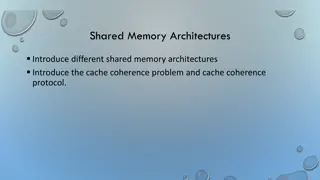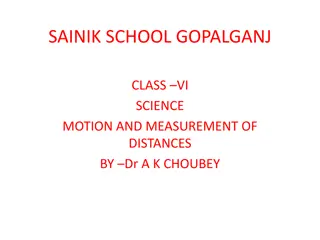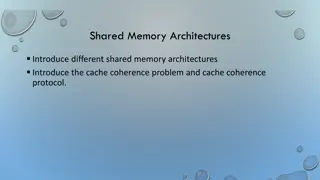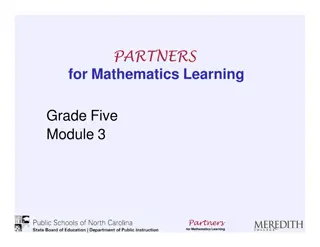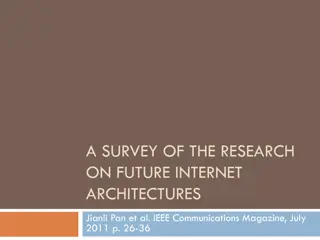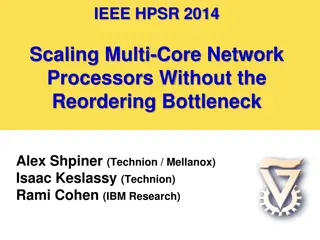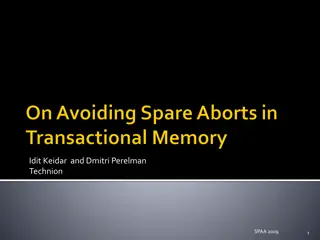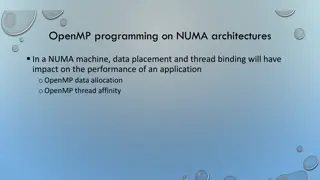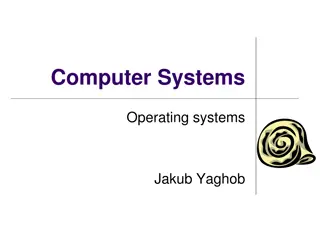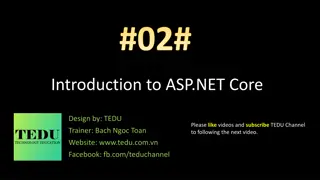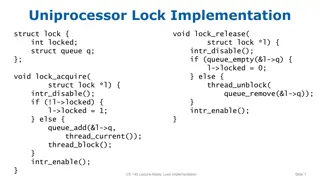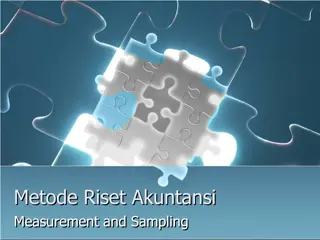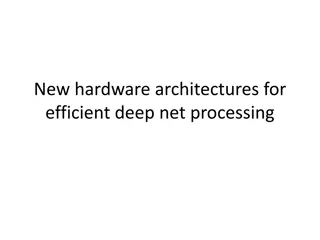Measurement-based WCET Analysis for Multi-core Architectures
This research focuses on providing an inexpensive multi-core solution for safety-critical systems by utilizing unmodified production chips and measurement-based WCET analysis tools. The goal is to enable WCET analysis on multi-core setups while preserving cost, performance, and time-to-market benefits. Various related works and optimizations are discussed to achieve accurate worst-case interference-aware WCET analysis. The approach aims to address the challenges of costly customized multi-cores in safety-critical applications.
Download Presentation

Please find below an Image/Link to download the presentation.
The content on the website is provided AS IS for your information and personal use only. It may not be sold, licensed, or shared on other websites without obtaining consent from the author.If you encounter any issues during the download, it is possible that the publisher has removed the file from their server.
You are allowed to download the files provided on this website for personal or commercial use, subject to the condition that they are used lawfully. All files are the property of their respective owners.
The content on the website is provided AS IS for your information and personal use only. It may not be sold, licensed, or shared on other websites without obtaining consent from the author.
E N D
Presentation Transcript
Measurement based WCET Analysis for Multi- core Architectures Hardik Shah, Andrew Coombes, Andreas Raabe, Kai Huang and Alois Knoll Technische Universit t M nchen, RapitaSystems Ltd and fortiss GmbH
Multi-cores in safety critical systems Safety critical semiconductor industry o ~2% of the whole market o Customized multi-cores an expensive solution o Even a trivial change (change of an arbiter) could be prohibitively expensive o Unavailability/closed of cycle accurate simulator for extracting recorded trace 9/30/2024 2
Goal Provide an inexpensive multi-core solution which is WCET analyzable o Use unmodified production chips o Use unmodified measurement based WCET analysis tool suitable of single-core architectures Preserve cost, performance and time-2- market benefits 9/30/2024 3
Agenda Related work Background Worst case interference aware WCET analysis o Optimizations Test cases Demo Conclusion 9/30/2024 5
Related work I (WCET analysis) Static o Abstract architecture and application models Hybrid measurement based [13 Kirner et al] o RapiTime (more in background section) Measurements in the presence of stress patterns o Only valid under PD arbiter [25] 9/30/2024 6
Related work II (WCET analysis) Others o Real-time calculus [19 - Pellizzoni et al.] o Model checking [15 Lv et al.] Closest o [16 Nowotsch et al.] Monitoring and suspension mechanism on shared resource usage Limited accesses in a unit time [15, 16, 19] Holistic approaches 9/30/2024 7
Related work III (Tailored architectures) Time analyzable multi-cores o MERASA [29], parMERASA [28] Repeatable time machines o PRET [14], CoMPSoC [11] Probabilistic timing analysis o PROARTIS [7], PROXIMA [12, 20] 9/30/2024 8
Background: Emulation devices Test chips with enhanced debug facilities Produced in low numbers and supplied to OEMs before the production chips are sold Much cheaper to modify 9/30/2024 9
Background: Hybrid measurement based WCET analysis Analyzed by RapiTime On target measurements Complex architectures are analyzable Intrusive 9/30/2024 10
Background: Hybrid measurement based WCET analysis Used in RapiTime timing analyzer Instrumentation points o Time stamp trace o ET profile Critical path detection using MOETs of BBs 9/30/2024 11
Background: Round robin arbiter WLrr = N x SS, BLrr = SS (N total number of masters) Experienced latency [BL, WL] RapiTime approach is invalid for multi-cores 9/30/2024 12
Worst case interference augmented tracing Adds a cache observer module in emulation device of the production chip Occurrence time of cache misses and their experienced latencies are saved in a trace 9/30/2024 13
Offline trace manipulation Artificial delay in occurrence Artificially inflates the MOET of BB by appending each cache miss with WL 9/30/2024 14
WCET calculation from manipulated trace Input to RapiTime Single core worst case path 9/30/2024 15
Worst case interference augmented tracing Benefits o Does not alter production chips Cost and performance benefits are preserved o Unmodified single-core tools o WCET of application under complex arbiters, e.g. CCSP [4], PBS [27], can be measured o Analysis in isolation (incremental certification) 9/30/2024 16
Worst case interference augmented tracing Drawbacks o Additional master interface - lower operating frequency o Trace size 9/30/2024 17
Optimized solution No master interface Only iPoint trace o Same as single core measurements 9/30/2024 18
Optimized solution Benefits o Simple architecture and ultra low area footprint o No capacitive loading emulation device can run at same frequency as the production device Drawbacks o WCET under complex arbiters, e.g. CCSP, PBS, is high due to the assumption of WL for each cache miss 9/30/2024 19
Overestimation of our approach Intrusive (same as single core technique) o Measured WCET has impact of iPoint() executions o iPoint() modifies cache state Deduction of iPoint() execution time is not enough ! o Impacts history based branch predictors Assumption of WL under RR is not pessimistic o Highly interference vulnerable applications [26] 9/30/2024 20
Area overhead Architecture LEs With cache observer 13555 Without the cache observer 14272 Test architecture o NIOS II-F Quad core processors, 512 (4K) I$, D$ o Optimized cache observer o On-chip shared SRAM o @ 125 MHz, Cyclone III FPGA o 5% increase in area of emulation device (basic) 9/30/2024 21
Test results 512 B I$ and D$ WCET multi-core WCET single-core Instrumentation overhead Cost of porting from single- core to multi- core Multi-path applications from M lardalen Benchmark suit 9/30/2024 22
Test results 4 KB I$ and D$ avg(WCETni/WCETnis) reduces as cache size increases due to the less number of cache misses 9/30/2024 23
Demo: www6.in.tum.de/Main/Shah 9/30/2024 24
Future extension Partitioned L2 cache o Observe dedicated partition as well as the shared partition o May not be considered a COTS design 9/30/2024 25
Conclusion A novel technique to measure WCET of applications on multi-core architectures Existing single-core analysis tools Unmodified production-chips o Preserves cost and performance benefits o Trivial addition to emulation chips is required Incremental certification Thank you Questions? 9/30/2024 26














